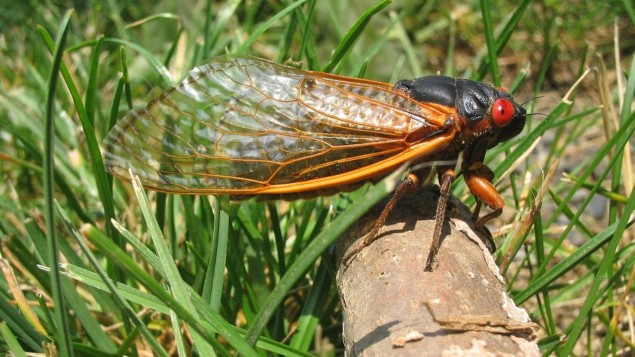Fire ants don’t use the Cheerios effect after all, a bumper year for cicadas

Welcome to this year’s first instalment of the Red Folder, which has two tales from the wonderful world of insects.
Fire raft ants have a remarkable ability to survive floods – something that could come in handy in the UK, which is currently suffering severe flooding in many low-lying areas. When it rains, the ants can be seen to avoid drowning by clumping together to form floating rafts of 10 or more ants.
One possible explanation for this survival strategy is the “Cheerios effectâ€, which causes floating breakfast cereal to clump together in a bowl of milk. This occurs thanks to the surface tension of the liquid and a “meniscus effect†whereby the liquid sticks to the Cheerios underneath but also along the sides of the object. As liquid molecules are then strongly attracted to a solid’s edge, this acts to stick more and more Cheerios together.
But work from researchers in China and the US now challenges the relevance of this effect to fire ants. They observed live and dead fire ants – as well as a local species of ant – on water while shaking them vertically or horizontally. They found that dead ants and local ants did not stick together to form rafts. But the fire ants could still build rafts when shaken, and this told the researchers that the attractive behaviour is more nuanced and could be triggered by pheromones that are released when fire ants sense danger. Putting the rafts under stress, also resulted in the rafts “self-healing†with ants moving from the top to the bottom to keep it afloat. The buoy-ant mystery continues.
Summer will be buzzing
The buzzing of cicadas is a common feature of warm days in many parts of the world. Resembling elongated, oversized house flies, male cicadas create their mating songs using tymbals, which are resonating structures on the creatures’ exoskeletons. Cicadas spend most of their time burrowed underground in the nymph stage of their life cycle. They emerge for a brief period as flying insects when they mate and the female cicada lays eggs in the branches of trees. The hatched nymphs then fall back to earth — along with the adults, who die after mating.
Some long-lived species in eastern North America are famous for having distinctive broods of flying insects. These broods are synchronized to emerge in huge numbers once every 17 or 13 years. There are several theories for why this happens. One is that having such long lifecycles makes it difficult for short-lived predators such as wasps to specialize in eating the emerging cicadas.
In this Instragram video, the mathematician Hannah Fry points out that 17 and 13 are both prime numbers – and why that could be significant to how the lifecycles evolved. What is more, she says that 2024 marks the first time in more than 200 years that the lifecycles will overlap in some places. So, if piles of dead insects are not your thing, you might want to avoid certain parts of North America this summer.






